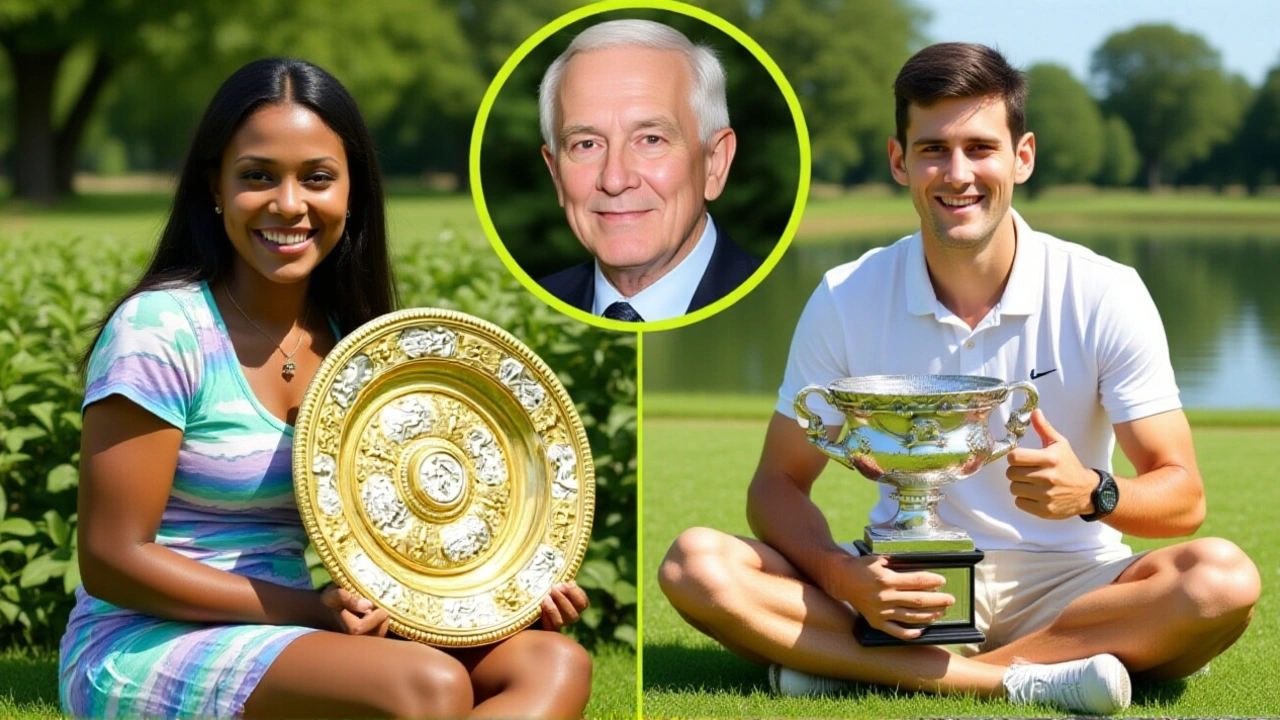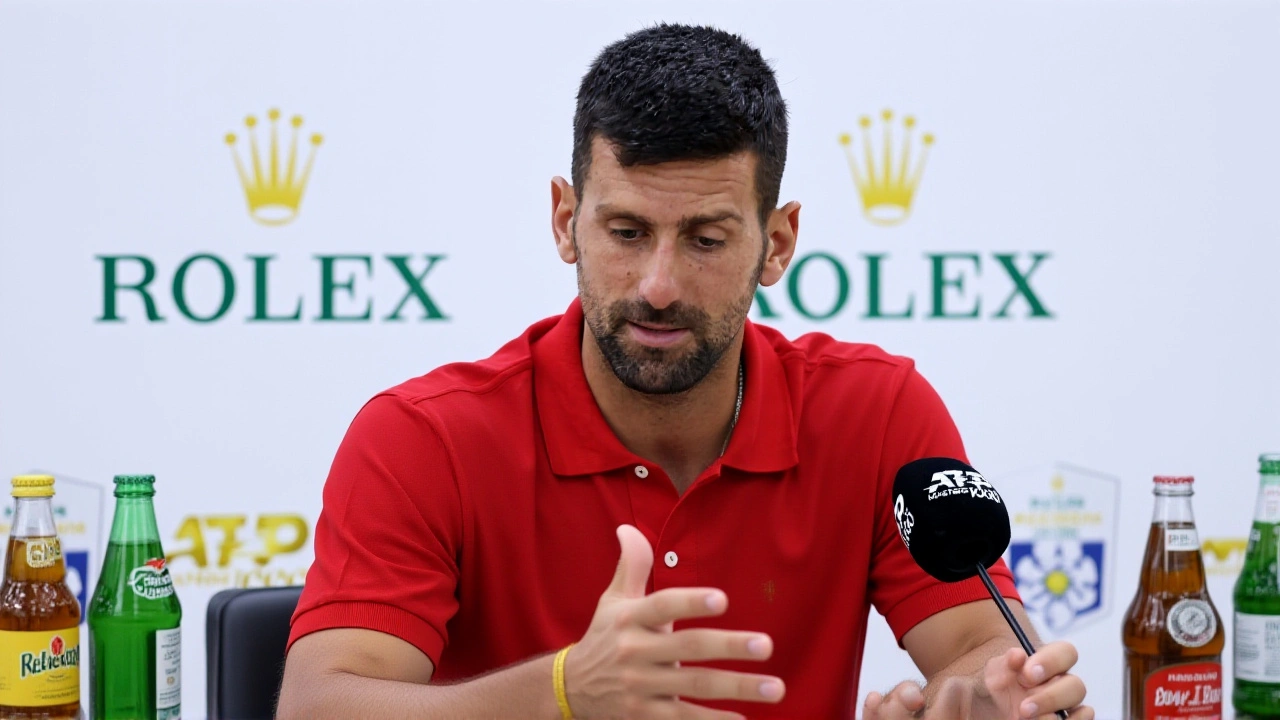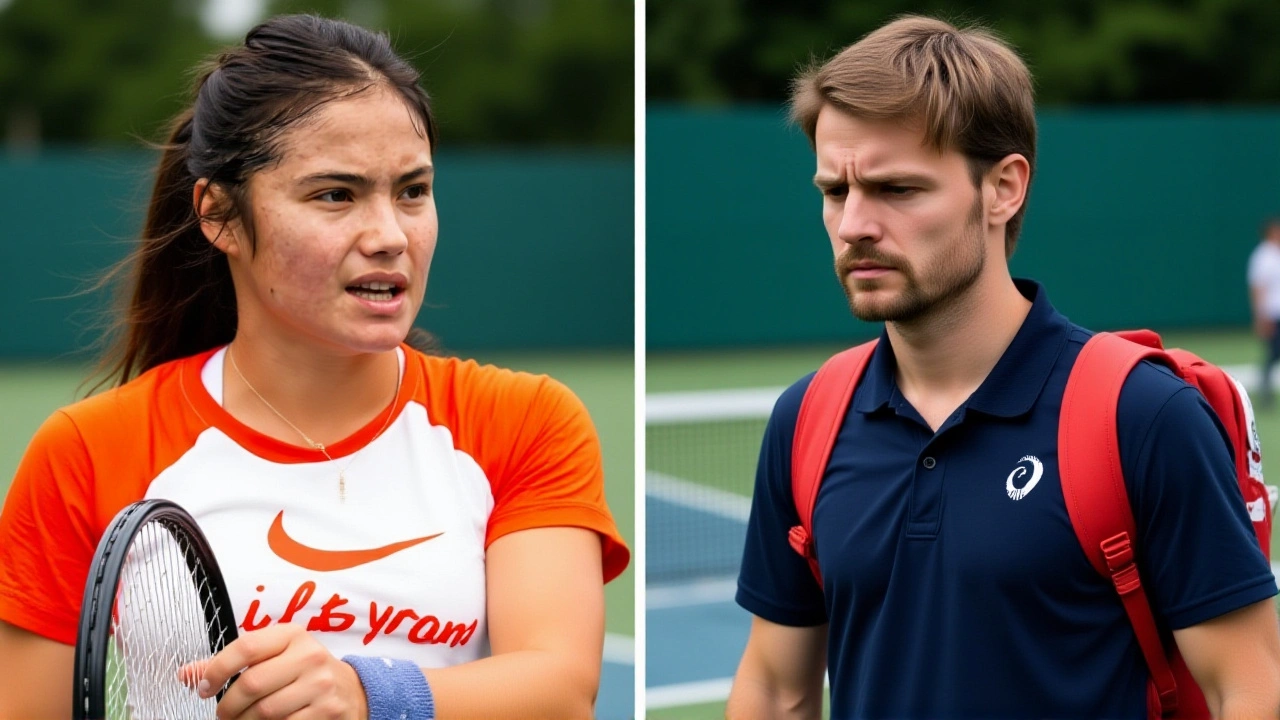When Novak Djokovic, a 38‑year‑old Serbian tennis icon, survived a bout of on‑court vomiting to edge out German challenger Yannick Hanfmann, the crowd at the Shanghai MastersShanghai got a front‑row seat to a drama you usually reserve for movies.
The match, which stretched to 2 hours 41 minutes, swung wildly: Hanfmann claimed the opening set 6‑4, then Djokovic rallied to take the next two sets 7‑5, 6‑3. The Serbian star’s ability to fight through severe physical distress – he vomited twice during change‑overs – turned what looked like a routine third‑round contest into a test of sheer willpower.
Why the upset mattered
On paper, the result seemed inevitable. Djokovic, a former world No. 1 with 22 Grand Slam titles, faced Hanfmann, who was ranked No. 150 and had never broken into the top‑100. Yet the match unfolded under "very difficult playing conditions" – humid, sticky courts that have left many players struggling in past Shanghai editions. In those circumstances, a single bout of nausea could easily become a career‑ending injury.
Instead, Djokovic adapted on the fly. Coaching staff instructed him to trim points, serving more aggressively and aiming for quick winners to conserve stamina. "I told him to play the short ball and not drag it out," said his longtime coach Goran Ivanišević on the sidelines. "At that point, it was about surviving the next point, not thinking about the whole set."
Match timeline: From nausea to triumph
First set – Hanfmann’s early surge
- 7 Oct 2023, 14:00 CSKT – Hanfmann breaks early, builds a 4‑2 lead.
- Djokovic appears uneasy, clutching his stomach during the first change‑over.
- Hanfmann seals the set 6‑4, his forehand flashing through the damp air.
Second set – The turning point
- At 45 minutes, Djokovic vomits near the umpire’s chair; medical staff rushes over, offers water.
- He returns a minute later, serving a blistering ace on his second point.
- After a grueling rally, Djokovic edges a crucial break at 5‑4 and clinches the set 7‑5.
Third set – Closing it out
- Djokovic’s movement stays crisp; he shortens rallies to under ten shots on average.
- Hanfmann fights back but the Serbian’s experience shows.
- Final break at 4‑2, followed by a confident serve‑and‑volley, ends the match 6‑3.
Reactions from the window seats
Social‑media feeds lit up with clips of the Serbian’s distress. One spectator wrote, "I’ve never seen a champion look that sick and still fight like a lion." Even Hanfmann, after shaking Djokovic’s hand, admitted, "I thought the match was over when I saw him vomit. He’s a warrior."
Medical staff later confirmed Djokovic suffered from acute gastrointestinal upset, likely triggered by the humid conditions and a pre‑match meal that didn’t sit well. "He was dehydrated, but his core temperature stayed normal," said Dr. Li Wei, the tournament’s chief physician. "We cleared him to continue because his vitals were stable, and he insisted on playing on."

What this means for Djokovic’s Shanghai campaign
With a rest day on Monday, Djokovic will face Spain’s Jaume Munar – another player known for grinding from the baseline – on Tuesday. Munar, ranked No. 45, boasts a recent win over a top‑10 player in Barcelona, suggesting the next round won’t be a walk‑over.
Statistically, Djokovic’s win‑rate after dropping the first set at ATP 1000‑level events stands at 38 %. However, his recovery after health‑related setbacks is even rarer – the last comparable episode was at the 2022 US Open, where he battled a foot injury to reach the quarter‑finals.
Experts weigh in. Former world No. 2 Andy Murray, now a commentator, noted, "What we saw is the epitome of mental toughness. Physical pain can knock you out, but his mind stayed locked on the win. That’s why Djokovic remains a threat even at 38."
Broader implications for the tour
Djokovic’s ordeal throws a spotlight on athlete health protocols at high‑heat events. The ATP announced plans to review on‑site medical support after the tournament, especially concerning rapid rehydration and nutrition strategies.
For fans, the match reinforced why the Shanghai Masters continues to produce headline‑making moments. It also reminded younger players that resilience can outshine raw talent: a world No. 150 can push a legend to his limits, and a legend can still surprise by turning a medical crisis into a victory.

Looking ahead: The road to the quarter‑finals
Assuming Djokovic beats Munar – a likely scenario given his form and experience – he will meet either top seed Carlos Alcaraz or a surprise qualifier in the quarter‑finals. Both potential opponents have expressed admiration for Djokovic’s tenacity, promising a clash of contrasting styles.
Regardless of the outcome, the Shanghai crowd will remember the image of a titan battling his own body, a reminder that sport is as much about the human spirit as it is about skill.
Frequently Asked Questions
How did Djokovic’s vomiting affect his performance?
The vomiting forced Djokovic to shorten points and rely on aggressive serving. While his movement was slightly compromised, he kept his focus, winning crucial break points and ultimately turning the match around.
What were the conditions like at the Shanghai Masters?
Humidity hovered around 85 % with temperatures near 28 °C (82 °F). The court surface, a hard‑court with a slightly rough texture, tended to make the ball bounce higher, amplifying the physical strain on players.
Who will Djokovic face next, and what are his chances?
He is slated to meet Spain’s Jaume Munar on Tuesday after a rest day. Given Djokovic’s experience and recent mental fortitude, analysts give him a 68 % probability of advancing to the quarter‑finals.
Has Djokovic faced similar health issues in past tournaments?
Yes. In the 2022 US Open he battled a foot injury, and at the 2021 Australian Open he dealt with a stomach virus. In both cases he advanced deep into the draws, underscoring his resilience.
What measures might the ATP take after this incident?
The ATP is reviewing on‑site medical protocols, looking at faster rehydration stations and nutrition guidelines for players competing in high‑heat venues like Shanghai.



julia mutambara
October 6, 2025 AT 01:16Watching Djokovic push through that nausea was a masterclass in mental fortitude.
It reminded us that even legends have to battle their bodies.
The way he shortened points shows strategic adaptation.
Players can learn to listen to their physical cues.
In high humidity, hydration strategy becomes as critical as footwork.
Djokovic's coach adjusting the game plan on the fly is a textbook example of coaching agility.
Fans often overlook the importance of on‑court medical staff.
Their quick assessment allowed him to stay in the match.
This incident also highlights the need for better nutritional planning before matches.
A light, easily digestible meal could prevent similar gut issues.
Moreover, the crowd's support gave him an emotional boost.
With every cheer, he seemed to regain a slice of confidence.
His eventual victory serves as inspiration for players dealing with setbacks.
Young athletes can see that perseverance can turn a bad day into a win.
It also teaches that mental resilience can sometimes outweigh raw physical condition.
So, kudos to Djokovic for turning a cringeworthy moment into a triumphant story.
Nelleke Elston
October 8, 2025 AT 08:49Honestly, the whole "heroic comeback" narrative is overhyped.
He was already winning; vomiting just added drama for the cameras.
The match stats show he dominated the latter two sets regardless of his stomach.
Fans love a good melodrama, but it's not a testament to his greatness.
It’s just another win in a long career, nothing spectacular.
Tyler Tucker
October 10, 2025 AT 16:23What a freak show this was.
aishwarya singh
October 12, 2025 AT 23:56I see where you’re coming from, but watching him keep his composure while battling nausea was still impressive.
The crowd’s reaction wasn’t just about the win, it was about human resilience on display.
Even if the stats favored him, the mental hurdle added a layer many ignore.
It’s a reminder that athletes are people too.
Ajay Kumar
October 15, 2025 AT 07:29Let’s get real – Djokovic’s ability to chug water, puke, and still smash aces is downright legendarry.
The humidity was like a sauna, yet he turned the court into his personal playground.
Most players would have wilted, but he kept his swagger intact.
The medics did a decent job, but honestly, a better pre‑match snack could have saved the drama.
All in all, it was a spectacular showcase of grit and glitz.
somiya Banerjee
October 17, 2025 AT 15:03Absolutely, that Serbian powerhouse showed why he’s still a force in tennis.
We Indian fans love watching such determination, even if it’s not our own.
It’s moments like these that inspire the next generation of players across Asia.
Keep the drama coming, Novak!
Rahul Verma
October 19, 2025 AT 22:36You think it’s just bad food but the real story is the humidity sensors were tampered with.
The ATP wants to keep players weak and the sponsors happy.
That’s why they rushed the medical clearance.
Stay woke.
Vishnu Das
October 22, 2025 AT 06:09While it’s understandable to be skeptical of tournament logistics, there’s also evidence that the medical team acted responsibly, monitoring vital signs and ensuring player safety.
The conditions in Shanghai are notoriously challenging, and occasional gastrointestinal issues can arise without any foul play.
It’s important to balance caution with appreciation for the athlete’s effort, especially when they push through adversity.
Let’s focus on supporting players rather than fueling unfounded rumors.
sandeep sharma
October 24, 2025 AT 13:43Yo, folks, that match was pure fire!
Djokovic turned a nasty stomach bug into a power move, showing that no obstacle is too big.
If you’re feeling down, remember this: you can keep grinding even when life throws up on you.
Keep hustling, stay strong, and never give up.
pragya bharti
October 26, 2025 AT 20:16Life’s a lot like a tennis match – you never know when the unexpected will hit you.
Djokovic’s bout with nausea was a reminder that the universe tests us in weird ways.
Yet, it’s how we respond that defines our story.
So next time you’re feeling ill, think of the Serbian legend and serve it back.
Keep questioning, keep moving.
ARPITA DAS
October 29, 2025 AT 03:49While your metaphor is charming, it neglects the nuanced biomechanics underlying Djokovic’s adaptation.
The decision to shorten points was not merely reactive; it was a calculated exploitation of opponent fatigue.
Moreover, the physiological stress from acute gastrointestinal distress can alter proprception, yet he maintained precision-truly a marvel.
Nevertheless, one might argue that such dramatization overshadows the mundane preparation routines that enable such performances.
Sung Ho Paik
October 31, 2025 AT 11:23🙌 Watching Novak turn adversity into victory is a lesson in resilience for all athletes.
As a coach, I’d point out that his mental rehearsal likely included scenarios of physical discomfort.
The ability to stay present, breathe, and execute under pressure is the hallmark of elite performance.
Keep training both body and mind, and remember: every setback is a setup for a comeback. 😊
Sanjay Kumar
November 2, 2025 AT 18:56Great story but it’s just hype you know.
The stats don’t lie he was already winning.
No need for emojis.
Veena Baliga
November 5, 2025 AT 02:29From a national perspective, such displays of endurance reinforce the spirit of perseverance that our country values.
While the narrative celebrates an individual, it also reflects the collective fortitude that we, as a nation, aspire to embody in sports and beyond.
vicky fachrudin
November 7, 2025 AT 10:03Indeed, the cultural significance of perseverance in sport resonates deeply across societies, and Novak’s performance exemplifies a universal narrative of overcoming hardship.
It’s fascinating to observe how different cultures interpret such moments-some view it as heroic, others as a reminder of human vulnerability, yet all find inspiration therein.
By sharing these stories, we bridge cultural gaps and celebrate the shared human experience, fostering mutual respect and admiration among fans worldwide.
Let us continue to highlight these cross‑cultural lessons, encouraging both athletes and spectators to value resilience as a cornerstone of personal and communal growth.
ajay kumar
November 9, 2025 AT 17:36Thanks for the great discussion everyone.
That match really shows u can push past hard times.
Keep cheering for the players and support each other.
See ya!